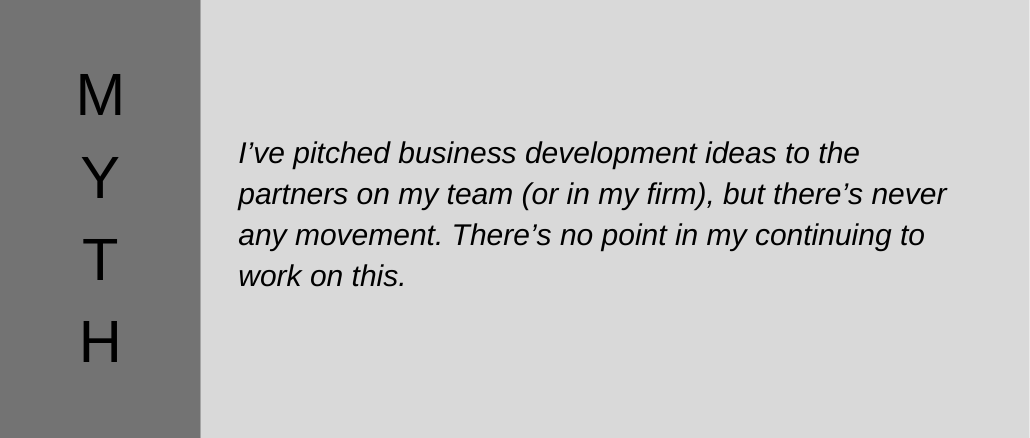A client told me this true story a few years ago, and it’s never left me. (I have, of course, changed the names in this retelling.)
The trial finally started after numerous delays. Richard listened patiently as Nathan made his opening statement. When he finished, Nathan sat down at his counsel table. As Richard stood to offer his opening, Nathan crooked his finger to beckon Richard over. Motioning Richard to lean down, Nathan turned his body so they were face-to-face just inches apart, but neither the judge nor the jury could see Nathan’s lips. Grinning broadly, Nathan whispered “&%$@ you,” then leaned back in his chair – leaving the court and the jury with the impression that they’d just shared a friendly, collegial exchange. Richard, seething throughout his opening, never quite found his rhythm. Score one for rage.
Lawyers who are or aspire to be leaders must learn to self-manage. The skill of self-management incorporates the habits that create sufficient energy, emotional resilience, and mental focus—essentially anything that promotes one’s ability to be her best self. Especially when stressed or under pressure, it’s easy to let some aspects of self-management slide. For example, some attorneys I know offer a blanket apology to staff and colleagues along these lines: “I’m feeling stressed, so please excuse me if I blow up or yell at you or throw things, ok?” I don’t recommend that approach; it’s been than nothing, I suppose, but it’s announcing that bad behavior is coming and that it will come unchecked.
Lawyers are all too often faced with galling statements, actions, arguments, and behavior. As the opening vignette shows, sometimes the irritation is extreme. Some lawyers’ litigation or negotiation tactics include making an effort to find their opponents’ hot buttons: push the button and out pops an angry person whose train of thought left the station as anger pulled in, someone who’s hard to believe or respect. (Same goes for witnesses, too.) When that happens, emotional resilience goes out the window and self-management becomes difficult because the brain’s attention is hijacked.
So, what can you do when faced with provocation that would make the Buddha quiver with rage? I suggest six steps that can help you maintain your focus and avoid an unconscious reaction. These steps are simple yet often difficult to apply in the heat of the moment. The more you practice them, however, the closer they’ll come to habit.
- Keep your attention on the motivation behind the provocation. Is the person who’s enraging you doing it intentionally, or is it a by-product of words or behavior that she likely thinks perfectly appropriate? If it’s the former, don’t give her the satisfaction of knowing he succeeded. If it’s the latter, consider whether displaying annoyance would stop the behavior or simply let your opponent know that she’s found a soft spot.
- Breathe. This is great advice for just about any charged situation, but it’s especially good for dealing with anger. Faced with provocation, you can react (which implies knee-jerk emotional feedback made without any reflection) or you can respond (which implies feedback that follows a pause and analysis/reflection to determine the best way to address the situation). Almost without exception, responding creates better results than reacting will, and breathing offers a chance for you to collect yourself and respond. There’s no reason why you can’t fall silent for a few seconds (even though the time may feel interminable to you and your opponent) while you work through your options.
- Speak softly. Most of us tend to raise our voices when we speak in anger. Therefore, it’s disarming to do the opposite and to speak more quietly. The effect is to appear reasonable and controlled (especially helpful if your opponent is ranting and raving and appearing to be out of control) and to force your opponent to listen carefully to hear what you have to say. I’ve read that in Japanese culture when two parties are arguing, the one who raises her voice first loses. It’s a difficult tactic for many of us to master, but if you can speak softly in the face of provocation, you will stand a much better chance of controlling your anger.
- Vent. Express your anger in some forum that poses no risk of exposing it. Writing can be helpful, but especially if you write an angry response to an email, be sure that you don’t accidentally send it!
- Exercise. That’s physical venting. When feasible, it’s a great idea to get up and take a walk instead of marinating in a situation that makes you angry.
- Selective, intentional release of anger. Sometimes, it’s absolutely appropriate to respond to provocation by expressing your anger at the person whose behavior has triggered it. But consider the consequences of such an expression. Will you disrupt a relationship? Do you stand to lose ground? Will your expressed anger cause the person to react in a way that will cause you even more trouble? And when you do choose to display anger, consider doing so through your words only but continuing to speak in a low, even tone of voice. That will reinforce the gravity of your words.
Despite our best efforts at these tactics, all of us lose our tempers sometimes. When that happens, don’t be afraid to apologize, admit to being human, and move forward.



